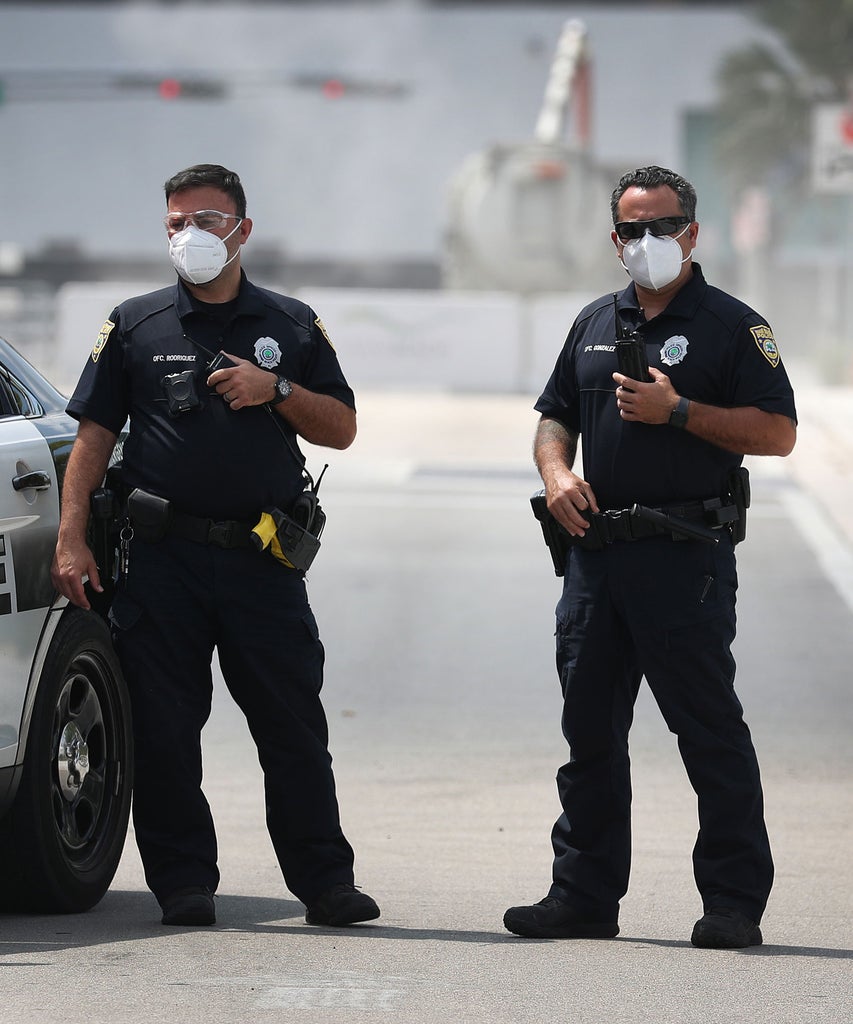Has The Policing Of Social Distancing Gone Too Far?
April 13, 2020DMT Beauty#DMTBeautySpot #beauty

How much harm should law enforcement be allowed to do in the name of keeping us safe?
In response to the largely undiminished spread of COVID-19 across America, states have instituted a slew of new mandates aimed at keeping people socially distant for long enough to flatten the ballooning rates of infection. In New York City, Mayor Bill de Blasio has authorized the NYPD to dole out $500 fines to city residents who flout social distancing policies. In Alaska, Governor Mike Dunleavy has temporarily prohibited all intrastate travel, unless it is “to support critical infrastructure; or for critical personal needs.” In Lexington, Kentucky, local police recently set up a new call-in hotline that residents can use to report neighbors who are gathering in public; over the course of just one weekend, the hotline received 86 calls.
But in several recent, high-profile examples, police can be seen using excessive force and even violence against individuals they have determined to be ignoring social distancing guidelines — prompting questions about how far law enforcement should be allowed to go in service of “flattening the curve.”
Video taken in a Harlem subway station on Friday night shows NYPD officers restraining a crying child as a woman claiming to be the boy’s mother protests. According to bystanders, the boy had been selling candy on the subway car before he was apprehended. “They looked like kidnappers, like they were trying to kidnap the little boy,” an onlooker who had filmed parts of the incident told Gothamist. “I felt outraged. It’s a little boy. Can’t they talk to him on his level and say it’s not safe, go home? Why did they need three officers to take him to the precinct?”
Cell phone video shot yesterday on the 145th Street subway platform in Harlem shows a group of NYPD officers terrorizing a little boy for allegedly selling candy. pic.twitter.com/rWOj0nabGp
— Rebecca Kavanagh (@DrRJKavanagh) April 12, 2020
Just one day later, video footage taken in Philadelphia shows at least four Philadelphia Police Department officers violently dragging a man without a face mask off a city bus. The incident came after the Southeastern Pennsylvania Transportation Authority, or SEPTA, announced a new policy on April 7 mandating that all riders “wear masks or other facial coverings… to protect both riders and operators.” In response to the video footage, which prompted outraged reactions online, SEPTA told ABC News that it would no longer allow enforcement of the policy.
Although the extreme measures being taken by law enforcement are no doubt being deployed under the logic that they will keep communities safer in the long run, legal advocates are worried that ramped up policing will tell a familiar tale for people of color and low income communities.
“No one is made safer by the abusive policing we witnessed in the footage from Harlem or Philadelphia,” Maryanne Kaishian, a senior staff attorney at the Brooklyn Defender Services, told Refinery29. “In addition to the fact that no public health interest was served, both the victims and witnesses of those abuses must now potentially contend with lasting trauma.”
According to Kaishian, the decision to criminalize individuals who do not comply with social distancing guidelines will likely have predictable outcomes for Black, Latinx and low-income individuals — the same communities already struggling with disproportionately higher rates of the virus as a result of preexisting economic conditions that make it more difficult to access things like adequate medical care and fresh, healthy fruits and vegetables.
The problem with criminalizing people for ignoring social distancing guidelines is systemic, Kaishian said: The individuals most likely to be outside during a pandemic in the first place are those who can’t afford to stay inside or who do not have access to private spaces, such as “hourly workers, the poor, and those without homes, as well as multigenerational families or multiple roommates living together in tiny NYC apartments.”
“We need to reimagine our solutions to public health concerns,” Kaishian said. “What if officers were handing out face masks instead of violently arresting someone who does not have one? What if a little boy and his mother were not in a position where they needed to sell candy on the subway in order to survive?”
The “rules” for coronavirus have been well-established: The Centers for Disease Control and Prevention recently reversed its recommendations on the efficacy of wearing face coverings in public, and has long advised that individuals remain at least six feet apart in order to mitigate transmission since the outbreak began. Still, in high-traffic cities like New York and Philadelphia, where many are finding themselves out of work and struggling to cope with these new realities, the policing of social distance ordinances threaten to disproportionately affect the communities where staying indoors means a threat to one’s livelihood.
If we’re ever to hope to return to some version of the social lives we left behind, staying apart now in order to slow the spread of COVID-19 in the future will be critical. But allowing police to use excessive force in the name of upholding social distancing guidelines — and the development of new surveillance technologies designed to assist police in penalizing perceived transgressions — will only serve to erode security and further terrorize the vulnerable communities already being hit the hardest.
Like what you see? How about some more R29 goodness, right here?
Why Homeless People Need Access To Hotels Now
How To Help Stop Child Abuse During Coronavirus
NYC Subway Protestors Want To Fight Over-Policing
DMTBeautySpot
via https://www.DMTBeautySpot.com
Brianna Provenzano, Khareem Sudlow

0 comments